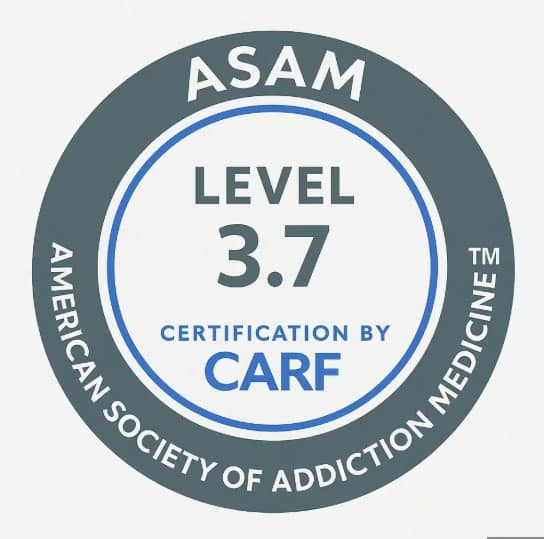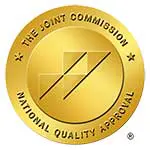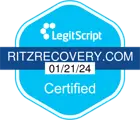Speak to an Admissions Specialist Today!
Call us at (888)-680-1356 or fill out a confidential form.
Wondering how much does drug and alcohol rehab in Los Angeles cost? The costs vary based on the type of treatment, facility quality, and program length. This article will break down these factors and provide the average costs for both inpatient and outpatient rehab options in Los Angeles. Read on to understand what you can expect financially.
Key Takeaways
- The cost of drug and alcohol rehab in Los Angeles varies significantly based on treatment type (inpatient vs. outpatient), facility quality, and program duration.
- Inpatient rehab programs are generally more expensive, ranging from $5,000 to over $60,000 depending on the treatment duration and amenities, while outpatient programs are typically more affordable, with costs around $5,000 for three months.
- Financial assistance options, including state-funded programs, sliding scale fees, and insurance coverage, are crucial for making rehab more accessible to individuals facing financial constraints.
Understanding the Cost of Rehab
The cost of rehab can be a significant concern for individuals seeking treatment for drug and alcohol addiction. However, it’s essential to understand that the cost of rehab is not just a financial investment, but also a vital step towards recovery and a healthier life. The cost of rehab varies widely depending on several factors, including the type of treatment, length of stay, and insurance coverage.
For instance, inpatient programs, which offer 24/7 care and accommodation, tend to be more expensive than outpatient programs. The duration of the treatment also plays a crucial role; longer programs generally cost more but may provide a more comprehensive recovery process. Additionally, insurance coverage can significantly reduce out-of-pocket expenses, making rehab more accessible.
Understanding these factors can help you make an informed decision about your treatment options and ensure that you invest in a program that offers the best chance for successful recovery from alcohol addiction.
Factors Influencing Rehab Costs in Los Angeles

Several factors can significantly influence the cost of drug and alcohol rehab in Los Angeles. Understanding these elements will help you anticipate and manage the financial commitment required for effective treatment. The type of treatment—whether inpatient or outpatient—plays a crucial role in determining costs, as inpatient programs typically include housing and 24/7 care, making them more expensive than outpatient options. The prevalence of different substances contributing to drug abuse, such as alcohol and opioids, can also impact the cost of treatment.
The quality of the rehab facility and the amenities offered also greatly impact treatment costs. High-end facilities with luxury services and comfortable living conditions usually come with a higher price tag. Additionally, the duration of the treatment program is another significant factor; longer stays generally mean higher overall expenses.
Let’s delve deeper into these factors to see how they shape the rehab costs in Los Angeles.
Type of Treatment (Inpatient vs. Outpatient)
The type of treatment you choose, whether inpatient or outpatient, is a major determinant of rehab costs, especially when considering the financial aspects of drug abuse services.
Inpatient programs, which provide:
- 24/7 care
- accommodation
- medical supervision
- medication-assisted treatment
- specialized therapy at a treatment center
tend to be more expensive. For instance, the constant availability of medical staff and the inclusive nature of services make inpatient rehab a more comprehensive but costlier option.
On the other hand, outpatient rehab is generally more affordable since it does not require a residential stay. This type of treatment allows patients to live at home and continue with their daily responsibilities while attending scheduled therapy sessions. Outpatient programs are often chosen by individuals with private insurance to reduce expenses. Consulting with a treatment professional can help determine if your addiction issues can be adequately addressed through outpatient care.
Both inpatient and outpatient programs have their merits and challenges, and the choice between them should be based on your specific needs and financial situation. Understanding the cost implications of each can help you make an informed decision about your treatment plan.
Facility Quality and Amenities
The quality of the rehab facility and the amenities it offers can significantly influence the overall cost of treatment. High-quality facilities often provide a more comfortable and conducive environment for recovery, which can be crucial for successful rehabilitation. Luxury rehab centers, such as Ritz Recovery, offer amenities like private suites, gourmet meals, and state-of-the-art recreational facilities, which enhance the treatment experience but also come with a higher price tag.
Choosing a rehab center with luxury amenities can greatly enhance the overall treatment experience, reflecting in higher costs. However, these additional services can make a significant difference in the comfort and effectiveness of the addiction rehabs process.
Therefore, when evaluating rehab options, consider how the quality and amenities of the facility align with your needs and budget.
Duration of Treatment
The duration of your rehab program is another key factor affecting the overall cost. Longer treatment programs, which may last several months, tend to accumulate additional costs, significantly raising the total expense. Many inpatient rehab programs offer varying lengths of stay based on individual needs, which can impact the overall cost of treatment.
While shorter programs might seem more cost-effective initially, they may not provide enough time for comprehensive recovery, potentially leading to higher long-term costs due to relapse and repeated treatment. Therefore, it is essential to consider the duration of treatment that best suits your recovery needs and financial capabilities.
Cost of Drug Rehab in Los Angeles

Understanding the cost of drug rehab in Los Angeles requires a look at both inpatient and outpatient options. The financial aspects of drug abuse services can vary widely depending on the type of substance and treatment required. The expenses for drug rehab programs can vary widely, with basic detox programs starting at around $1,750. Inpatient treatment typically costs around $6,000, while a three-month outpatient program is estimated at about $5,000.
The cost of rehab programs in urban areas like Los Angeles is generally higher due to the rehab cost of living. Additionally, residential treatment centers may charge up to $80,000 for their services.
Let’s break down the costs for inpatient and outpatient drug rehab in more detail to understand what you can expect.
Average Cost of Inpatient Drug Rehab
Inpatient drug rehab programs are typically more expensive due to the comprehensive care they provide. A 30-day inpatient rehab program generally costs between $5,000 to $20,000. For extended programs lasting 60 to 90 days, costs can go upwards of $60,000.
Luxury inpatient rehab options, such as those offered by Ritz Recovery, may exceed $60,000 due to high-quality accommodations and extensive services.
The cost range for inpatient drug rehab programs varies significantly based on the level of care and amenities provided. This detailed breakdown helps in understanding the financial commitments associated with inpatient treatment.
Average Cost of Outpatient Drug Rehab
Outpatient drug rehab programs are generally more affordable compared to inpatient options. The typical drug rehab cost for outpatient treatment is around $575 per day, translating to roughly $5,700 per month. Intensive outpatient programs typically have a cost of approximately $5,000. This price is for a duration of three months, highlighting the drug rehab costs associated with different treatment options.
These programs are more budget-friendly and allow individuals to maintain their daily routines while receiving treatment. Understanding these cost differences can help in making a more informed decision about which type of program suits your financial situation and treatment needs.
Cost of Alcohol Rehab in Los Angeles

The cost of alcohol rehab in Los Angeles can vary significantly based on the type of treatment and the facility’s reputation. The average cost of a 30-day inpatient rehab program for alcohol treatment is approximately $12,500. Some programs are designed to provide comprehensive support, which can influence the overall cost.
Factors such as the type of treatment and the facility’s reputation play a crucial role in determining the cost of alcohol rehab. Let’s explore the costs for inpatient and outpatient alcohol rehab in more detail to provide a clearer picture of what you can expect.
Average Cost of Inpatient Alcohol Rehab
Inpatient alcohol rehab programs in Los Angeles can range significantly in cost. Factors influencing these costs include detox services, location, and specialized treatment options. The cost of inpatient programs can vary, with standard facilities being more affordable compared to high-end options with luxury amenities.
Understanding these factors is essential when choosing an inpatient alcohol rehab program, especially in the context of preventing alcohol abuse. The costs can range significantly, and considering these influencing factors will help in selecting the right program for your needs.
Average Cost of Outpatient Alcohol Rehab
Outpatient alcohol rehab programs are generally more budget-friendly compared to inpatient options. These programs typically range in cost from $2,000 to $10,000 for treatment, making them more accessible. The average cost for a three-month outpatient program is approximately $5,000.
These cost-effective programs allow individuals to continue with their daily responsibilities while receiving treatment. Understanding the cost differences between inpatient and outpatient programs can aid in making an informed decision about which type of program best suits your financial situation and recovery needs.
Affordable Rehab Options in Los Angeles

Several affordable options are available in Los Angeles for those concerned about the high costs of drug and alcohol rehab. Various payment options based on needs can determine the affordability of rehab programs.
Options for those unable to pay for rehab include:
- State-funded programs
- Loans
- Payment plans
- Scholarships
- Sliding-fee scales
Many rehab centers provide financial aid options, making treatment more accessible to individuals of various income levels. Understanding these options can help you find a rehab program that fits your budget while providing the necessary care. Financial assistance options can help manage the costs associated with drug abuse services, ensuring that treatment is within reach for those struggling with substance abuse issues.
State-Funded and Nonprofit Programs
State-funded and nonprofit programs offer free or low-cost drug addiction treatment options for those in financial need. Here are some options available:
- Several state-funded programs provide free treatment options.
- Many state-sponsored rehab programs can help individuals apply for Medicaid to cover detox costs.
- Nonprofits and community organizations often provide supportive services like sober-living housing.
Various nonprofit organizations offer free or low-cost rehab options for those who qualify based on income or other criteria. These programs make treatment more accessible to those who might not otherwise afford it.
Sliding Scale Fees and Payment Plans
Some treatment centers offer sliding scale fees based on income, making rehab more accessible for a wider range of people. Sliding scale fees allow clients to pay according to their income level, reducing the financial burden. Additionally, payment plans can extend the cost of treatment over time, facilitating better budget management for patients.
Both sliding scale fees and payment plans help to make rehab more financially feasible for those in need of treatment. These options are crucial for individuals seeking treatment who are concerned about the high costs associated with rehab.
Luxury Rehab at Ritz Recovery
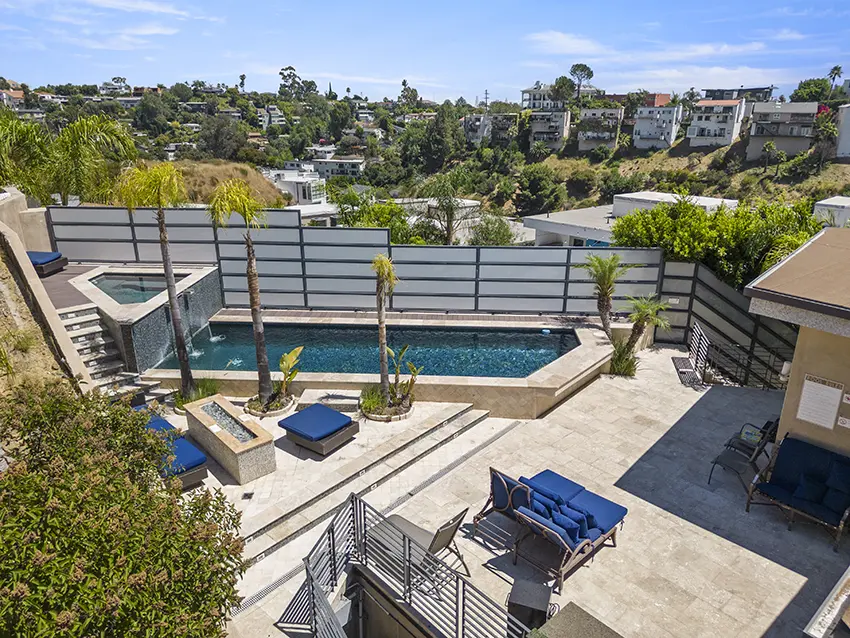
For those seeking a luxury rehab experience, Ritz Recovery offers top-tier treatment with a range of high-end amenities. The typical cost of luxury inpatient rehab centers like Ritz Recovery varies based on needs and length of stay. Ritz Recovery holds accreditations from DHCS and The Joint Commission, adding to its credibility and reputation.
Specializing in drug and alcohol addiction, Ritz Recovery provides 24/7 access to medical staff, ensuring comprehensive care at all times. As a top-tier rehab center in Los Angeles, Ritz Recovery is a prime example of how luxury amenities and specialized programs can enhance the recovery experience.
Amenities at Ritz Recovery
Ritz Recovery offers a range of luxury amenities to enhance the recovery experience. Clients enjoy private suites with large bathrooms, walk-in closets, and chef-prepared meals. The facility also includes a pristine pool and spa area for relaxation and rejuvenation.
Additionally, there is a state-of-the-art gym equipped for both cardio and strength training. These amenities provide a comfortable and conducive environment for recovery, making Ritz Recovery a standout option for those seeking a luxury rehab experience.
Specialized Programs at Ritz Recovery
Ritz Recovery offers specialized programs, including a couples rehab program designed to help partners recover together. This program focuses on joint recovery, enhancing the relationship while addressing addiction.
In addition to couples rehab, Ritz Recovery provides holistic therapy options that integrate physical, mental, and emotional healing. Trauma-informed care is another aspect of the treatment programs, catering to clients who have experienced various forms of trauma.
Client Testimonials and Success Stories
Client testimonials describe Ritz Recovery as a wonderful place with dedicated staff and as a life-changing experience. Clients highlight the support and commitment of the staff as major factors that enhance their recovery journey.
These personal experiences showcase the effectiveness of the rehab services provided at Ritz Recovery. Overall, testimonials reflect a strong positive sentiment about the transformative impact of the rehab services at Ritz Recovery.
Financial Assistance and Insurance Coverage

Navigating the financial aspects of rehab can be challenging, but various assistance programs and insurance coverage can ease the burden. Health insurance can cover part or all of rehabilitation costs, making it essential to verify coverage with insurance providers. Sliding scale fee structures can adjust costs based on an individual’s financial situation, making treatment more accessible.
Understanding these options can significantly impact your ability to afford rehab. Let’s explore the specifics of insurance coverage and financial assistance programs available for those seeking drug and alcohol rehab.
Insurance Coverage for Rehab
Health insurance can substantially reduce the out-of-pocket costs associated with rehab. Many drug and alcohol rehab facilities accept various insurance plans, including Medicaid. It is crucial to verify your insurance coverage by contacting your provider to understand what portion of the rehab costs will be covered.
Some facilities offer comprehensive services that are entirely covered by insurance, reducing the financial strain on individuals seeking treatment. Ensuring your chosen rehab center accepts your insurance can make a significant difference in managing the overall expense.
Financial Assistance Programs
Numerous financial assistance programs can help cover the cost of rehab for those without insurance. Options include free rehab programs, scholarships, government-subsidized services, and Medicaid or Medicare for detox. Programs like Alpine Recovery address economic conditions affecting treatment success by offering housing, transportation, employment, and educational support.
Payment options for a 30-day residential inpatient rehab program without insurance include payment plans, sliding scale fees, grants, and scholarships. By exploring these options, individuals can find a viable financial pathway to recovery.
Finding the Right Treatment Center
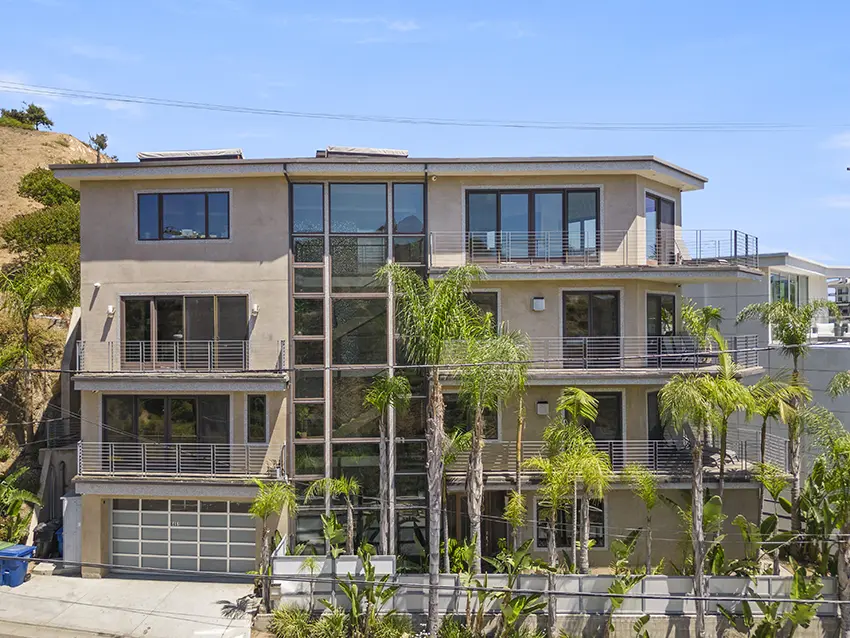
Finding the right treatment center is crucial for successful addiction treatment. With numerous options available, it can be overwhelming to choose the best facility for your needs. Here are some factors to consider when selecting a treatment center:
Researching Treatment Centers in Los Angeles
Los Angeles offers a wide range of treatment centers, each with its unique approach and specialties. When researching treatment centers in Los Angeles, consider the following factors:
- Accreditation: Look for treatment centers that are accredited by reputable organizations, such as the Joint Commission or the Commission on Accreditation of Rehabilitation Facilities (CARF). Accreditation ensures that the facility meets high standards of care and professionalism.
- Staff qualifications: Ensure that the treatment center has a team of qualified and experienced professionals, including doctors, therapists, and counselors. The expertise of the staff can significantly impact the quality of care and the success of the treatment.
- Treatment approach: Consider the treatment center’s approach to addiction treatment, including the types of therapies and programs offered. Some centers may focus on holistic therapies, while others may offer evidence-based treatments like cognitive-behavioral therapy (CBT) or medication-assisted treatment (MAT).
- Facilities and amenities: Consider the treatment center’s facilities and amenities, including the quality of accommodations, food, and recreational activities. A comfortable and supportive environment can enhance the recovery experience and contribute to better outcomes.
Factors to Consider When Choosing a Facility
When choosing a treatment center, consider the following factors:
- Insurance coverage: Check if the treatment center accepts your insurance and what costs are covered. This can significantly reduce your out-of-pocket expenses and make treatment more affordable.
- Cost: Consider the cost of treatment, including any out-of-pocket expenses. Compare the costs of different facilities and programs to find one that fits your budget.
- Location: Consider the location of the treatment center, including its proximity to your home and work. A conveniently located facility can make it easier to attend treatment sessions and maintain your daily responsibilities.
- Program length: Consider the length of the treatment program, including the duration of inpatient and outpatient care. Ensure that the program length aligns with your recovery needs and personal commitments.
- Specialized programs: Consider the treatment center’s specialized programs, including programs for specific addictions, such as opioid addiction or alcohol addiction. Specialized programs can provide targeted care and support for your specific needs.
- Support services: Consider the treatment center’s support services, including aftercare programs and alumni support. Ongoing support can help you maintain your recovery and prevent relapse after completing the initial treatment program.
By considering these factors, you can find a treatment center that meets your needs and provides the best possible chance for successful addiction treatment.
The Long-Term Value of Rehab
Investing in drug and alcohol rehab and addiction rehab not only addresses immediate health concerns but also offers significant long-term benefits. Rehabilitation provides a comprehensive approach to healing, addressing psychological, emotional, and physical aspects of addiction. Many clients at Ritz Recovery have described their experiences as life-changing and miraculous, highlighting the profound impact of effective rehab programs.
Beyond personal growth, rehab can lead to new opportunities, such as pursuing education or new career paths. Let’s delve into the specific long-term benefits of overcoming addiction, including cost savings and improved quality of life.
Cost Savings from Overcoming Addiction
The financial implications of drug addiction are staggering. For instance, an individual with a heroin addiction using one gram per day faces costs exceeding $55,000 annually. Similarly, the annual cost of a cocaine addiction for an individual using one gram per day is more than $32,000.
Investing in addiction treatment can help eliminate these long-term costs, making the initial rehab expenses worthwhile. The cost of substance abuse treatment is more than seven times greater than the costs associated with treatment, underscoring the economic value of seeking rehab.
Improved Quality of Life
Successful rehabilitation significantly enhances the quality of life for individuals recovering from addiction. Participants often experience improvements in mental health, leading to better emotional stability and resilience. Recovery from addiction also results in enhanced physical health, including improved energy levels and reduced anxiety.
Many people report increased productivity and better job performance after completing rehab, contributing to potential income growth. Overall, rehab services provide a holistic improvement in life quality, emphasizing the importance of investing in effective treatment programs.
Summary
In summary, understanding the costs associated with drug and alcohol rehab in Los Angeles is crucial for making informed decisions about treatment. Factors such as the type of treatment, facility quality, and duration significantly influence rehab costs. While the expenses can be high, various affordable options and financial assistance programs are available to help manage these costs.
Investing in rehab offers substantial long-term benefits, including cost savings from overcoming addiction and an improved quality of life. Facilities like Ritz Recovery provide a luxury rehab experience with specialized programs and high-end amenities, showcasing the transformative potential of effective treatment. Taking the first step towards recovery is a valuable investment in your health and future.
Frequently Asked Questions
How much does inpatient drug rehab cost in Los Angeles?
Inpatient drug rehab in Los Angeles generally costs between $5,000 and $20,000 for a 30-day program, while longer programs may exceed $60,000. It is essential to consider these costs when planning for treatment.
Are there affordable rehab options available in Los Angeles?
Affordable rehab options are indeed available in Los Angeles through state-funded programs, nonprofit organizations, sliding scale fees, and payment plans. These resources can help individuals access the necessary support without financial strain.
Does insurance cover the cost of rehab?
Insurance can cover part or all of rehab costs, but it is crucial to verify your specific coverage with your provider and select facilities that accept that insurance.
What amenities does Ritz Recovery offer?
Ritz Recovery provides luxury amenities including private suites, gourmet meals, a pool and spa, and a state-of-the-art gym. These offerings are designed to enhance the recovery experience.
What are the long-term benefits of rehab?
The long-term benefits of rehab encompass substantial cost savings from overcoming addiction, improved mental and physical health, enhanced job performance, and an overall higher quality of life. These improvements contribute to a more fulfilling and productive future.

